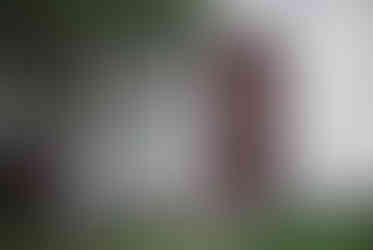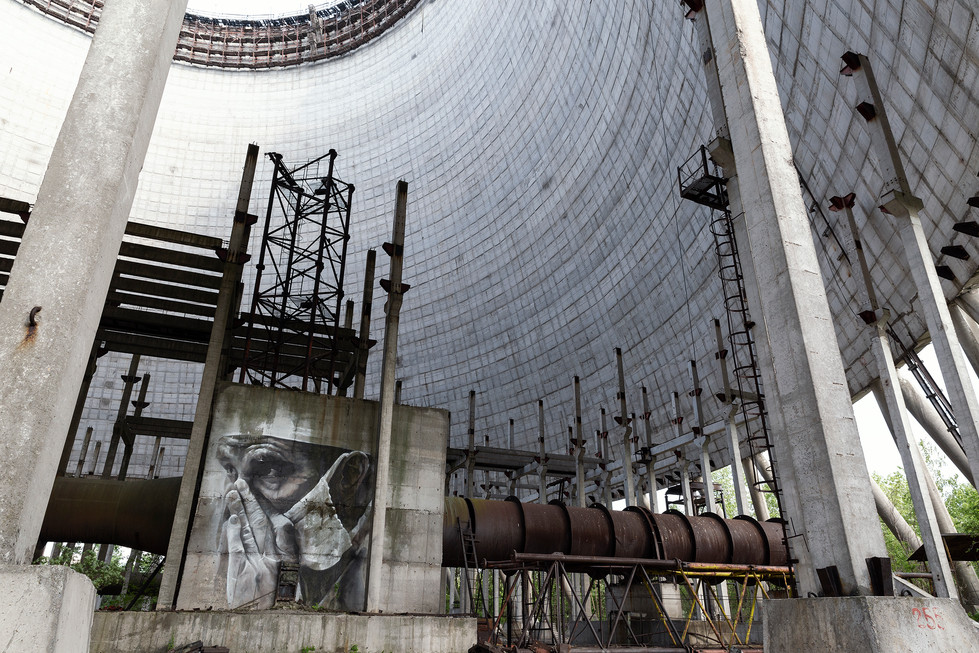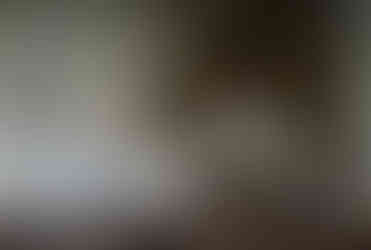the friendly atom
- James Drury
- Jun 21, 2019
- 4 min read
Updated: Mar 5
I've been back from Chernobyl for nearly three weeks and to a surprising extent I'm still decompressing from the whole experience. Despite seeing so many powerful images over the last few years I didn't count on being quite so overwhelmed by the scale of it all. As an 18 year old I clearly remember the news reports of the catastrophic explosion in 1986 and the subsequent 25 year ban on Lamb and milk from parts of Wales, the Lake District and closer to home in the Yorkshire Dales.

Chernobyl is a 2 hour drive heading North out of Kiev on a largely straight, flat but at times knackered road. Having spent the last 9 years travelling week in week out to the exclusion zone, our guide Mysha knows the road like the back of his hand, even spending stretches on the wrong side avoiding potholes. We drive past wide open fields tilled by a single farmer, endless stretches of forest, occasionally punctuated by ornate bus stops, often only a single person stood waiting in the morning sun.
Stopping en route for coffee, several mini buses pull up, some adorned with huge radiation warning stickers, undoubtedly Chernobyl bound. We know over 50,000 people visit each year, but we're starting to think we might be a bit late for an undisturbed experience exploring the
abandoned town of Pripyat. We reach the first military checkpoint on the edge of the 30km exclusion zone as even more mini buses and coaches pull up for passport & visa checks. We sign our waivers, collect our radiation dosage monitors then head off to the 10K inner exclusion zone. More paperwork checks, friendly banter between Mysha and the guards and we're in...but still not quite sure if we'll have a free run of the place...step forward a few hours and we realise it was worth the 18 month search for our guide as he manages to avoid other groups while directing
us to specific floors and rooms of interest in huge looted buildings.

Day 1
The Duga early warning radar facility with propaganda room, gym and even a school. Next, an abandoned Summer Camp, Kindergarten in the woods & a half built cooling tower next to the Chernobyl reactor with artwork by the street artist Guido van Helten. Then onto the abandoned town of Pripyat, built to house the plants workforce and once home to 50,000 residents (17,000 of whom were children). Compared to other Soviet towns, the facilities in this model town must have seemed incredible; multiple gymnasiums, pools, schools and even a supermarket. Onto school No.3, complete with basement carpeted in gas masks (standard issue to every resident as part of civil defence planning, nothing to do with the explosion)
Day 2
An early start high on the roof of the Hotel Polissya for a panoramic view of Pripyat, followed by
the Palace of Culture 'Energetik', complete with gymnasium (more pommel horses). School No. 5 (more pianos) followed by a Kindergarten and the now iconic abandoned amusement park that never opened, with ferris wheel and bumper cars. Then onto the memorial outside the Sarcophagus (complete with snoozing stray dog), followed by the Music school with ornate mosaic exterior and then the less ornate Pripyat Bus Station.
Day 2 cont...
On our way to the Hydrofoil Station & Cafe we walk through a wood, unknowingly the pitch of the sports stadium. At times Pripyat feels like the ruins of Angor Wat, with buildings barely visible through the forest. Nature is winning; I even trip over a tree root on the 2nd floor of a building. Onto the main Post Office with another impressive mural and finally Hospital No. 126 where the firefighters were treated before being moved to Moscow for specialist radiation treatment. It's almost 7pm when we finish, so we head off back to our hotel as the night time curfew begins. The background soundtrack of cuckoos accompanies us throughout each day (and howling stray dogs at night). Wildlife appears to be abundant here, over three days we see a red squirrel, turtle, fish, foxes and many, many birds. No wolves though...
Day 3
An early start at School No.2, again a beautiful hall mural (note another reference to the Space Race, with Cosmonaut centre stage) then onto School No. 4 with schoolroom teaching materials still in place. Finally, we explore the back of the Police Station and it's extensive dumping ground.
As a photographer, visiting Chernobyl is a truly incredible experience, in many ways it exceeded my high expectations. People are drawn to Chernobyl for so many different reasons - dark tourists, railway & power station enthusiasts, the curious and of course many more will come following the recent broadcast of the highly rated Chernobyl HBO mini series. Everyone was talking about it while we were there; guides reporting a huge surge in bookings. No doubt it will / has become the most bizarre tourist attraction on the planet, already there are mugs and even glow in the dark T shirts for sale.
It is worth going down the YouTube rabbit hole, there are some great films showing life in Pripyat before 1986. You get a feel for the size of the town & there's some great footage of the Azure swimming pool (Day 1 gallery) and one of the many Sports Halls (Day 2 Gallery)
If you want to know more about the accident and events leading up to it, I recommend - 'Chernobyl: History of a Tragedy' by Serhii Plokhy. Thoroughly researched, the author sets the context and steps through the accident in great detail, drawing a direct line from Chernobyl through to Glasnost and ultimately the break up of the Soviet Union.
The immediate human tragedy of the explosion and long term aftermath are told first hand in the harrowing 'Voices from Chernobyl' by Svetlana Alexirevich. 100's of people from all aspects of the tragedy were interviewed in a remarkable piece of research. Craig Mazin, the creator of the HBO series 'Chernobyl' cited this book as one of the main influences behind the series.
Thanks.













































































































































































